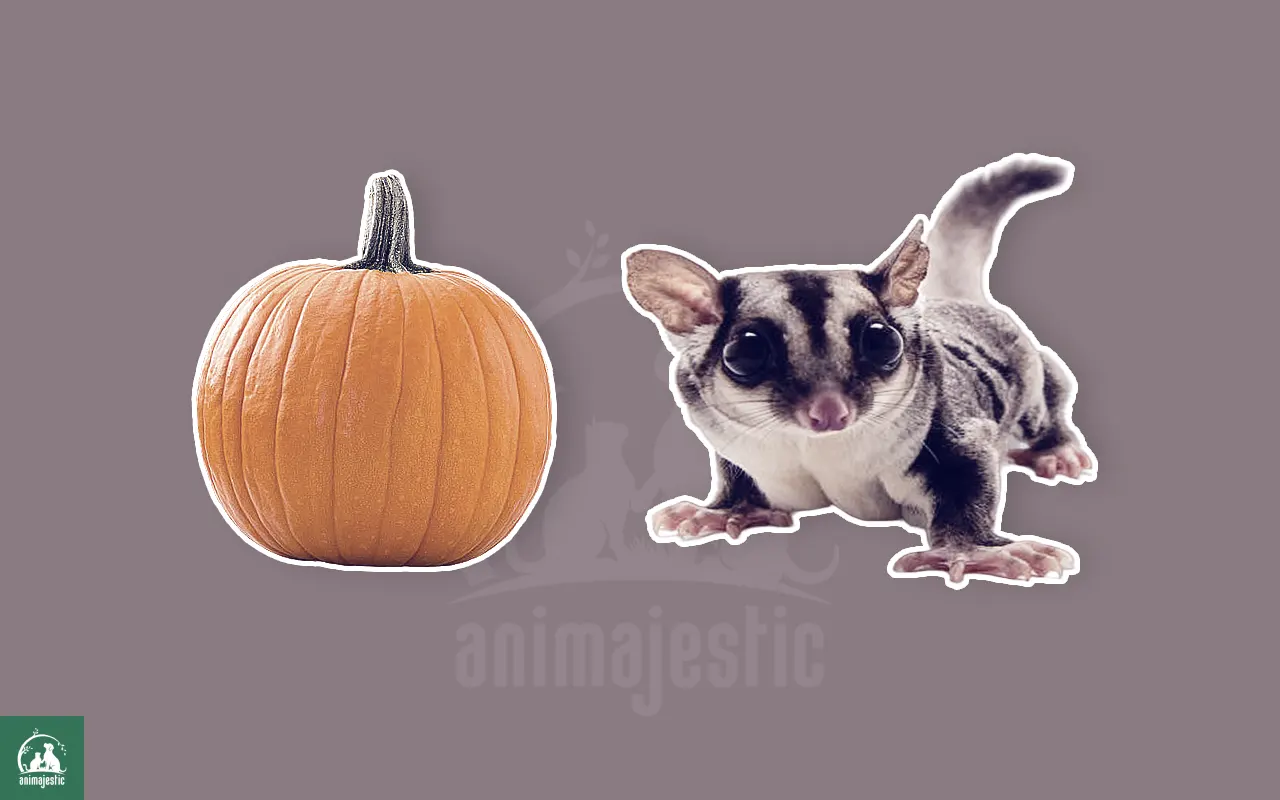Many asked if sugar gliders eat pumpkins and we need to clarify that when caring for your gliders, it is important to provide a well-balanced diet that fulfills their nutritional needs for optimal health.
Sugar gliders are omnivorous marsupials, and their diet consists of a variety of food items such as fruits, vegetables, insects, and nectar in the wild. One food item that sugar glider owners may consider offering is pumpkin.
In this article, we will explore the benefits, potential concerns, and ways to offer pumpkin to your sugar glider.
Can Sugar Gliders Eat Pumpkins?
To answer the question straight away: YES, sugar gliders can eat pumpkins. Pumpkin constitutes an excellent snack for these tiny furballs. However, it should be given in moderation, serving as an occasional treat rather than a staple in their diet.
Why is moderation key? Like any species, sugar gliders need a balanced diet for optimal health and longevity. Overconsumption of a single food, no matter how nutritious, can lead to an imbalance of nutrients.
Health Benefits of Pumpkin for Sugar Gliders
Pumpkin is a nutritious food that can be a healthy addition to your sugar glider’s diet when provided in moderation.
Here are some of the key health benefits of pumpkin:
Nutrient-Rich
Pumpkin is rich in essential nutrients such as vitamins and minerals. It contains vitamins A, C, E, and K, and minerals such as potassium, manganese, and copper. These nutrients are essential for the overall health and well-being of your sugar glider.
- Vitamin A: Crucial for healthy vision, skin, and immune system.
- Vitamins C and E: Powerful antioxidants that can help protect cells from damage and support the immune system.
- Vitamin K: Important for normal blood clotting and bone health.
- Potassium: Essential for proper muscle function and maintaining fluid balance.
- Manganese and Copper: Trace minerals that support bone health, immune function, and metabolism.
High in Fiber
Pumpkin is also high in dietary fiber, which is necessary for proper digestion in sugar gliders. It may help prevent gastrointestinal issues like constipation and promote overall gut health.
Low in Calories
Being low in calories makes pumpkin a great option for sugar gliders’ weight management.
Obesity is a common issue among captive sugar gliders due to low activity levels and excessive consumption of sugary and fatty foods.
Offering low-calorie food items like pumpkin in moderation is a good way to provide essential nutrients without contributing to weight gain.
Potential Concerns When Feeding Pumpkins to Sugar Gliders
While pumpkin can be a healthy addition to your sugar glider’s diet, there are some concerns to consider:
Seeds and Skin
Pumpkin seeds and skin can be a choking hazard for sugar gliders and should be removed before offering the pumpkin to your pet. Additionally, pumpkin seeds contain high levels of fat, which can contribute to obesity if fed in excessive amounts.
Controlling Portion Size
Although pumpkin has many benefits, it should not replace other key dietary components for sugar gliders.
Make sure to provide a balanced diet that includes a variety of food items, such as fruits, vegetables, insects, and a protein source like insects or a prepared sugar glider diet.
Excessive consumption of pumpkin may lead to nutrient imbalances due to a lack of diversity in the diet.
Preparing Pumpkin Before Feeding
It is essential to choose a fresh, ripe, and organic pumpkin to avoid harmful chemicals or pesticides that may be present in conventionally-grown produce. Washing the pumpkin thoroughly before feeding is another critical step to ensure food safety for your sugar glider.
How to Offer Pumpkin to Your Sugar Glider
When introducing pumpkin to your sugar glider’s diet, follow these steps to ensure a positive experience:
- Wash and Cut: Wash the pumpkin thoroughly, removing any dirt or residue. Cut a small, manageable piece for your sugar glider.
- Remove Seeds and Skin: Carefully remove the seeds and skin to avoid choking hazards and reduce fat content.
- Offer in Small Amounts: Introduce pumpkin in small amounts initially to minimize the risk of stomach upsets. You can gradually increase the portion size as your sugar glider becomes accustomed to it.
- Observe: Keep an eye on your sugar glider after feeding the pumpkin to ensure they are not experiencing any adverse effects.
- Rotate with Other Foods: To maintain a balanced diet, alternate pumpkin with other fruits and vegetables in moderation.
In conclusion, sugar gliders can indeed eat pumpkins. When offered correctly and in moderation, pumpkin can be a healthy and nutritious addition to your sugar glider’s diet.
The key is to ensure a well-balanced diet that meets all their nutritional needs.
By offering a variety of food items, you not only enrich their diet but also provide mental stimulation and enrichment that can enhance their overall well-being.
